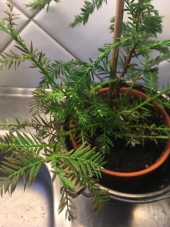





 2
2






 4
4




List of Bryant RedHawk's Epic Soil Series Threads We love visitors, that's why we live in a secluded cabin deep in the woods. "Buzzard's Roost (Asnikiye Heca) Farm." Promoting permaculture to save our planet.
 2
2




"People may doubt what you say, but they will believe what you do."
 3
3




















List of Bryant RedHawk's Epic Soil Series Threads We love visitors, that's why we live in a secluded cabin deep in the woods. "Buzzard's Roost (Asnikiye Heca) Farm." Promoting permaculture to save our planet.
 1
1




My Food Forest - Mile elevation. Zone 6a. Southern Idaho <--I moved in year two...unfinished...probably has cattle on it.





 1
1




Moderator, Treatment Free Beekeepers group on Facebook.
https://www.facebook.com/groups/treatmentfreebeekeepers/





 1
1




 Cut the grass to encourage the flowers pile the grass in a polo* round the trees so it does not touch the trees .
Cut the grass to encourage the flowers pile the grass in a polo* round the trees so it does not touch the trees .

Living in Anjou , France,
For the many not for the few
http://www.permies.com/t/80/31583/projects/Permie-Pennies-France#330873
















Adam Oaktree wrote:My apologies and thanks to everyone for my blankness and your great ideas.
I am in the uk actually so winter is fast approaching. Unfortunately the group looking after the plot are more focused on wild flowers and beautifying the area which is amazing! I just prefer fruit
Would a compost tea really go wasted on top of woodchip? My thoughts were to apply compost, em1 tea if I had it, fungi, then lay chip on top and some brush.
Also unfortunately people like aesthetics rather than what's best for the soil. Helping this orchard is a mini battle.
What would you use over here as a nitrogen fixer when the trees are already planted about 5 meters apart? bushes trees, your favourite? Probably best for another thread.
List of Bryant RedHawk's Epic Soil Series Threads We love visitors, that's why we live in a secluded cabin deep in the woods. "Buzzard's Roost (Asnikiye Heca) Farm." Promoting permaculture to save our planet.

|
I'm a lumberjack and I'm okay, I sleep all night and work all day. Tiny lumberjack ad:
World Domination Gardening 3-DVD set. Gardening with an excavator. richsoil.com/wdg |



